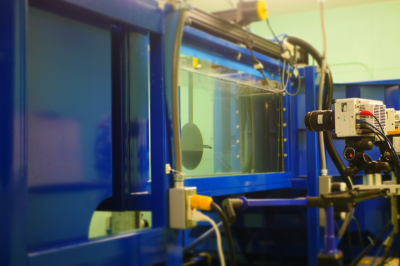
The Glycerin/water tunnel is a brand-new custom-made facility, based on a tunnel that was designed and built by Prof. Gustavo Assi from University of São Paulo in Brazil. It is funded by the Defense University Research Instrumentation Program (DURIP) from the Air Force Office of Scientific Research (AFOSR). The tunnel is a closed-return facility with a cross section measuring 0.5 m x 0.5 m and the test section length is 1.2 m. The range of achievable speeds is from ~5 mm/s to ~50 mm/s, which enables testing models at low chord-based Reynolds numbers flows from O(10) to O(1000), depending on the Glycerin/water mixture used. The facility enables qualitative measurements via dye flow visualization, as well as quantitative measurements using Time-Resolved Particle Image Velocimetry (TR-PIV).
Glycerin is a viscous transparent liquid. It is absolutely water-soluble, it is inert and dissolves many substances well. Pure Glycerin offers the formulator a liquid with a fortuitous balance of physical properties, brand, viscous, stable, hygroscopic and widely compatible. It is clear, odorless and recognized as safe, as well as it is virtually nontoxic to human health and to the environment, which makes it an ideal liquid for lab research. Adding Glycerin to water changes significantly the mixture’s properties. For example, a mixture of ~50% Glycerin and 50% water increases the mixture’s viscosity by ~ an order of magnitude compared to pure water. Furthermore, having a mixture of 85% Glycerin and 15% water results in a mixture that is 100 times more viscous than water. This suggests that the Reynolds number can be significantly reduced while still keeping the model size relatively large (i.e., keep high spatial resolution).